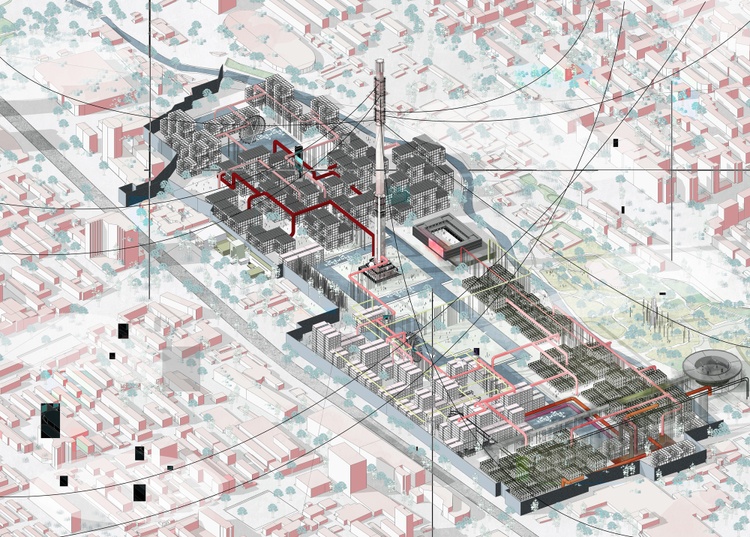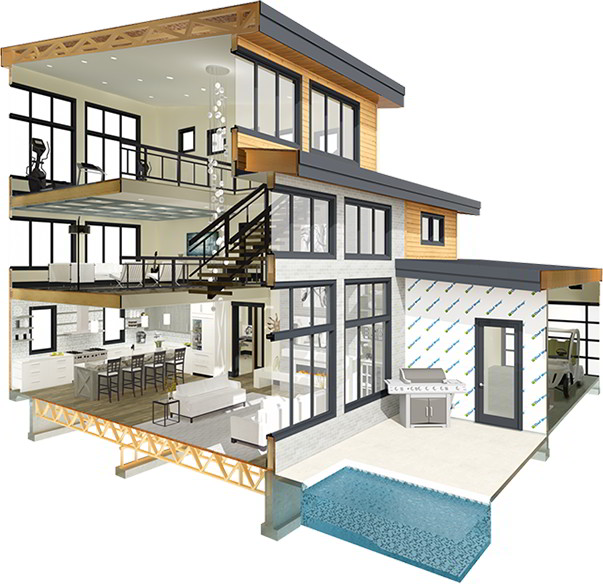The Creative Process Behind Successful Tasks from CDA Architects
Wiki Article
Recognizing the Collaborative Refine Between Architects and Designers in Modern Building And Construction Projects
The collaborative process between architects and engineers is vital in modern-day building jobs, as it balances layout intent with design usefulness. This partnership not just influences the visual and useful aspects of a task however likewise plays a vital role in resolving sustainability obstacles. By utilizing reliable interaction methods and leveraging innovative modern technologies, such as Building Information Modeling (BIM), teams can function a lot more cohesively. The ins and outs of this collaboration usually present distinct difficulties that can prevent progress. Checking out these dynamics reveals understandings that can substantially impact project results and general market standards. cda architects.The Importance of Partnership
The collaborative harmony in between architects and designers is crucial for the effective understanding of any type of building task. This collaboration brings together unique know-how and viewpoints, enabling the assimilation of ingenious style with useful design solutions. By interacting, engineers and engineers can ensure that a task not only satisfies aesthetic and practical requirements yet also complies with safety and security, sustainability, and monetary constraints.Collaboration fosters a common vision, helping with the positioning of objectives and assumptions from the outset. This placement is critical in addressing possible difficulties and mitigating threats that can occur during the job lifecycle. A collective strategy enables for the efficient allowance of sources, enhancing both time and expense.
The relevance of cooperation includes the repetitive process of layout and building, where comments from engineers can notify building choices, bring about even more possible and sustainable styles. On the other hand, designers can influence engineers to assume artistically concerning just how to attain architectural stability without jeopardizing artistic intent. Ultimately, the joint connection in between engineers and designers is not simply beneficial; it is fundamental to the development of top notch, functional, and cutting-edge built settings that satisfy the needs of culture.
Communication Methods and Devices
Efficient interaction strategies and tools are important for fostering partnership between engineers and designers throughout the task lifecycle. Establishing clear channels of interaction is vital to ensure that all team members are lined up with project goals, timelines, and duties. Regular meetings, both in-person and virtual, offer chances for stakeholders to discuss progress, address problems, and make notified decisions.
Additionally, taking on collective interaction devices, such as Slack or Microsoft Teams, allows for immediate messaging, file sharing, and continuous conversations, advertising an extra dexterous feedback to emerging concerns. Paper monitoring systems likewise play a vital role in organizing task documentation, making certain that all group participants have accessibility to the current information.
Shared Objectives and Task Vision
A merged project vision acts as the foundation for effective cooperation in between designers and engineers (cda architects). This shared vision not only lines up the efforts of both celebrations but also establishes a typical structure for decision-making throughout the project's lifecycle. By expressing clear goals, stakeholders can effectively navigate the complexities of modern-day building and construction projects, guaranteeing that both aesthetic and functional demands are fulfilledEstablishing shared objectives includes open dialogue and a detailed understanding of each discipline's contributions. Designers typically concentrate on layout intent, spatial relationships, and user experience, while engineers emphasize structural integrity, systems functionality, and compliance with laws. When these perspectives are lined up, the result is a cohesive project that abides Go Here by both creative ambitions and technical feasibility.
Moreover, a well-defined job vision fosters accountability among team members, motivating Read Full Article each participant to take ownership of their function in attaining the desired end result. Routine check-ins and joint workshops can additionally strengthen this commitment, allowing for adjustments to be made as the task advances. Eventually, a shared vision not only improves teamwork but also raises the high quality of the last deliverable, bring about successful task conclusion.
The Function of Technology
Leveraging innovation has actually become necessary in boosting partnership between engineers and designers. The combination of sophisticated software application devices helps with real-time communication and information sharing, enabling groups to work more efficiently and efficiently. Structure Details Modeling (BIM) sticks out as a pivotal innovation, allowing both designers and designers to develop detailed 3D designs that envelop style intent and architectural stability. This common aesthetic representation lessens misunderstandings and enhances the decision-making process.Additionally, cloud-based platforms enable seamless collaboration, enabling task stakeholders to gain access to and update task information from anywhere. This cultivates a society of transparency and liability, as modifications can be tracked and reviewed in real-time. Furthermore, mobile applications additional boost interaction, supplying on-site teams with immediate access to project specs and updates.
Arising innovations such as expert system and machine discovering are likewise starting to play a role in predictive evaluation, aiding teams recognize possible issues prior to they occur. Eventually, the function of modern technology in architecture-engineering cooperation not only enhances operations efficiencies but also boosts innovation, resulting in even more effective job outcomes. By embracing these technical innovations, architects and engineers can make certain a more natural and efficient collective process throughout the building lifecycle.
Case Research Studies in Successful Partnerships
Countless study show the profound effect of reliable collaborations in between designers and engineers on project results. One noteworthy instance is the partnership on the High Line in New Your Domain Name York City City, where landscape engineers, engineers, and urban organizers interacted to change a deserted railway right into a lively public park. This multidisciplinary strategy not only enhanced the aesthetic high quality however additionally made certain architectural safety and ecological sustainability.
The Burj Khalifa in Dubai additionally demonstrates the value of collaborative initiatives - cda architects. The assimilation of design and design proficiency allowed the project team to attain extraordinary heights while sticking to safety regulations and aesthetic vision
These instances highlight the significance of interaction, trust, and shared objectives. In today's complicated building atmosphere, such partnerships are essential to navigating obstacles and supplying jobs that meet both functional and visionary objectives.
Final Thought
In final thought, the collaboration in between architects and engineers is necessary for the success of contemporary building and construction jobs. Efficient interaction methods, a shared job vision, and the assimilation of innovative modern technologies are essential elements that promote this partnership.Report this wiki page